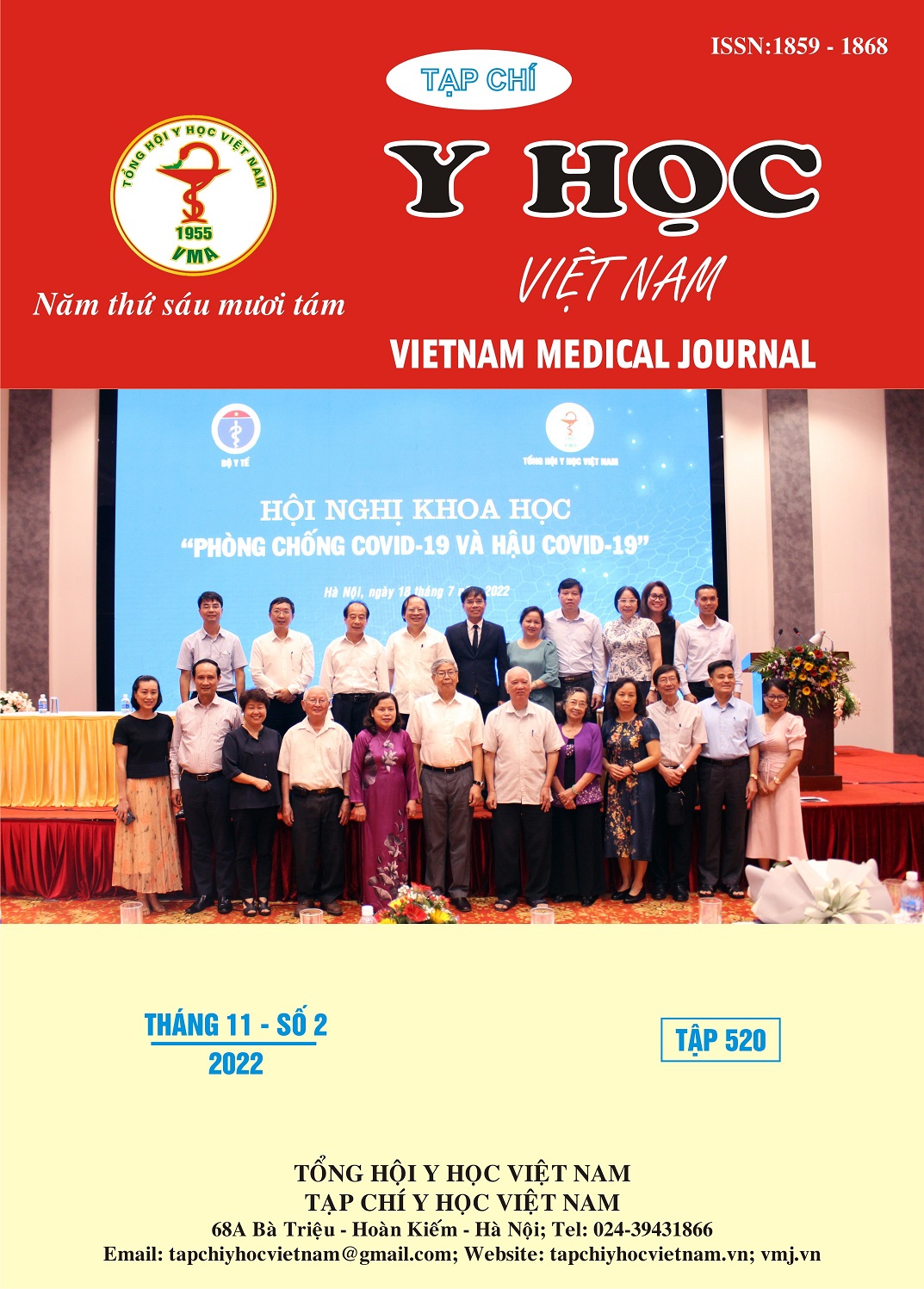LOCALIZED PERIPAPILLARY RETINAL NERVE FIBER LAYERS DEFECT IN PRIMARY OPEN ANGLE GLAUCOMA
Main Article Content
Abstract
Purposes: To evaluate focal damage of the peripapillary retinal nerve fiber layer (RNFL) in patients with primary open-angle glaucoma in latent (preperimetric), early and moderate stages according to GSS, Mills 2006 classification and correlation between functional and structural damage. Methods: Cross-sectional study. All participants have throughout eye exam, a 24-2 visual field test on Humphrey machine is conducted. RNFL is accessed by Cirrus HD-OCT 5000, protocol Optic Disk Cube 200x200, ONH and RNFL Analysis. Results: We conducted a study on 146 eyes of 99 primary open-angle glaucoma patients. There is a significant change in the thickness of the nerve fiber layer according to the market stages at the positions of average (p=0.009), upper (p=0.034), lower (p=0.002), 5 hours (p=0.025), 6 hours (p=0.012) with a confidence level of over 95% (p<0.05). There is a significant correlation between the mean nerve fiber layer thickness, the upper and lower nerve fiber layer thickness and the positions 1 o'clock, 2 o'clock, 5 to 7 o'clock, 11 and 12 o'clock with the indices. market with p < 0.05. The strongest correlation is shown in the lower quadrant position with the MD, PSD and VFI indexes of 0.341, 0.334 and 0.31 respectively. Conclusion: The focal defect of the RNFL is significantly modified in patients with early primary open-angle glaucoma, however, the rate of focal defect in 1 clock hour are small and need further study. The average RNFL thickness and several locations were weakly correlated with early visual field damage.
Article Details
Keywords
Open-angle, localized defect, RNFL
References
2. Tham Y.-C., Li X., Wong T.Y., et al. (2014). Global prevalence of glaucoma and projections of glaucoma burden through 2040: a systematic review and meta-analysis. Ophthalmology, 121(11), 2081–2090.
3. Kanamori A., Nakamura M., Escano M.F.T., et al. (2003). Evaluation of the glaucomatous damage on retinal nerve fiber layer thickness measured by optical coherence tomography. Am J Ophthalmol, 135(4), 513–520.
4. Wu H., de Boer J.F., Chen L., et al. (2015). Correlation of localized glaucomatous visual field defects and spectral domain optical coherence tomography retinal nerve fiber layer thinning using a modified structure–function map for OCT. Eye (Lond), 29(4), 525–533.
5. Đỗ Hoàng Hà, Nguyễn Quốc Vương, and Đào Thị Lâm Hường (2012). Ứng dụng kĩ thuật chụp cắt lớp võng mạc đánh giá sự thay đổi của lớp sợi thần kinh quanh đĩa thị giác mắt glôcôm nguyên phát. Tạp chí Y học Thực hành, 810(3).
6. Nguyễn Quốc Đạt. Mối tương quan giữa độ dày lớp sợi thần kinh võng mạc và tổn thương thị trường trên bệnh nhân glôcôm. Tổng hội Y học Việt Nam.
7. Mills R.P., Budenz D.L., Lee P.P., et al. (2006). Categorizing the stage of glaucoma from pre-diagnosis to end-stage disease. Am J Ophthalmol, 141(1), 24–30.
8. Medeiros F.A., Zangwill L.M., Bowd C., et al. (2012). The Structure and Function Relationship in Glaucoma: Implications for Detection of Progression and Measurement of Rates of Change. Invest Ophthalmol Vis Sci, 53(11), 6939–6946.


